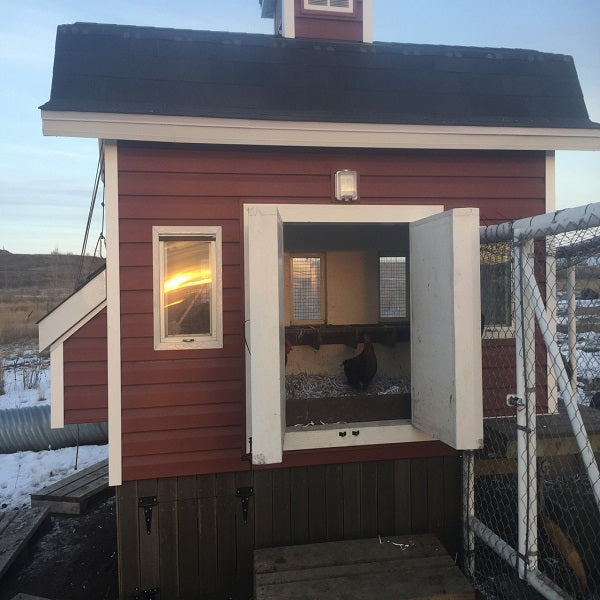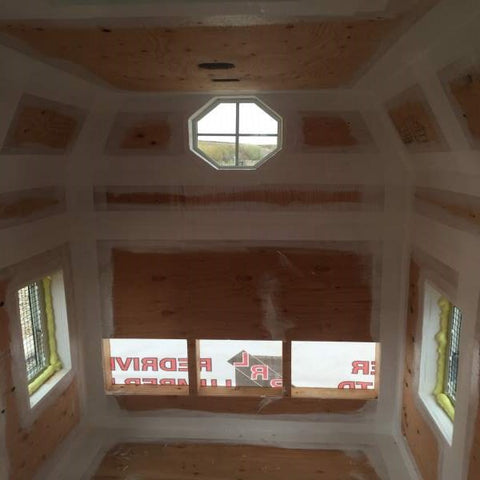How to Waterproof a Chicken Coop Using Liquid Rubber







When waterproofing the interior of your chicken coop, there are a multitude of ways water can find its way in and out.
Regardless if you bought a pre-made chicken coop or have constructed it yourself you will first need to visually inspect the exterior of the coop to ensure everything is in the right place.
The chicken coop has similar components that your house would. Like the home you live in, the roof, gutters and flooring need to work efficiently. If you do find any leaks in these areas, Liquid Rubber offers products to provide the ultimate chicken coop waterproofing solution inside and out.
The Liquid Rubber Seam tape will help bridge the seams, joints, cracks and gaps found within the coop. You can also use our Liquid Rubber Geo-textile Fabric and 3 course method to waterproof a chicken coop.
Liquid Rubber Seam Tape applied to Flat Seam
The Seam Tape provides an extra waterproofing layer for areas that are subjected to movement and most likely to spring a leak.
Once you have applied the Seam Tape, the next step is to prime the surface using our Liquid Rubber Multipurpose Primer and then top coat the areas with 3-4 coats of our Liquid Rubber Polyurethane Deck Coating. This product comes in a variety of colors allowing you to match the style of the coop.
It is important to build up the layers of the Liquid Rubber Polyurethane Deck Coating, achieving the recommended thickness increases the durability and longevity of the waterproof membrane.
Curing ranges between 4 to 8 hours per coat depending on temperature and humidity. These products can save you time and money while also providing a watertight environment for your hens.

Importance of Building a strong Waterproof Membrane
As discussed in the beginning, keeping your chicken coop clean is extremely essential. Many chicken owners want to use a power washer to clean the interior because it is quick and effective.
The biggest fear is that the strong water will damage the infrastructure. By creating a strong waterproof membrane with products like Liquid Rubber Polyurethane Deck Coating, you will easily be able to clean the interior of your chicken coop, while maintaining the integrity of materials like wood.
How Much Deck Coating is Required?
According to Backyard Chicken, a forum for raising and maintaining hens, the general rule is to allow 4 sq. ft. per chicken. For example, a chicken coop that is 3’ x 4’ is 12 square feet meaning you can keep 3 chickens in that coop.
Depending on how many chickens you have will dictate the amount of square footage required to be waterproofed. Liquid Rubber Polyurethane Deck Coating covers approximately 50 sq ft per gallon final coverage. Generally, 3-4 generous coats are used.


Over time, areas like the nest-box doors and hatches, the coops door and grit holders are likely to experience wear and tear. If there are any areas of your chicken coop that are experiencing a leak, our Polyurethane Deck Coating is a great choice to renew and rejuvenate the faulty area.
The Liquid Rubber Polyurethane Deck Coating is an Environmentally Friendly, non-toxic, water-based coating that contains no solvents or VOC’s making it an ideal product to use in your chicken coop.
When cleaning any area of your chicken coop, keep in mind you will need to use some form of liquid to help remove any unwanted substances. Taking precaution by properly waterproofing all areas that will experience the elements will help maintain the integrity of the structure and ultimately make your cleaning endeavor easy.



We love to see before and after photos of your project. Have fun and good luck!
You can purchase our products and find more information by visiting our website at https://liquidrubber.ca/

